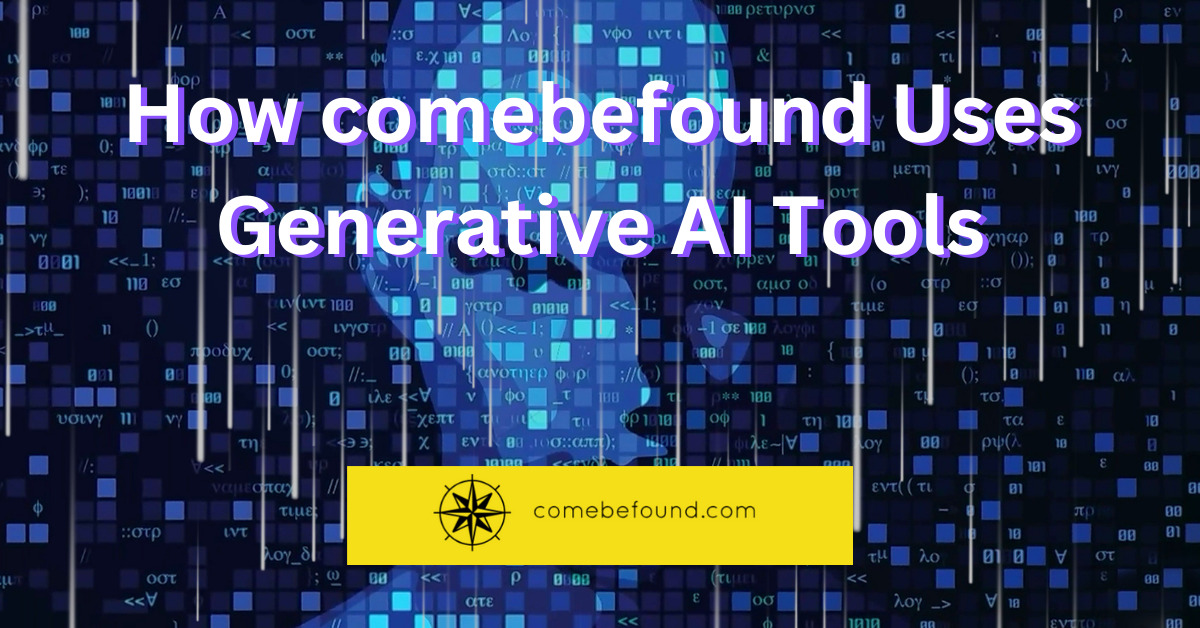Digital marketing agencies are already using Artificial Intelligence to generate text and images internally and for their clients. In this article, we outline how comebefound will (and won’t) use the technology.

Written By: Matthew
Date: March 2nd, 2023
ChatGPT, while not the first AI tool on the scene, has absolutely made Artificial Intelligence (AI) a household term and not just some crutch of a science fiction movie. It has put very powerful technology into the hands of everyone with access to the Internet. The future for this and other generative AI tech is incredible and we have only just scratched the surface.
Like most new technology, we typically try to see whether it can help make our lives easier and / or do our jobs better. And in some cases, AI tools really can make a difference. In other more articulate cases, however, it churns out convincing sounding information at a lightning pace but the moment it is fact-checked, falls apart just as fast. Add to it its formulaic approach and it can leave you, and your clients, feeling cold.
As the founder of this company, my background in IT will always push us to try new tech. Not only from a streamlining perspective but also from a cybersecurity perspective: I want to know what to recommend and what to avoid for my business and my customers. That said, one of our USP’s and core principles is being “Trustworthy”. We want our clients to trust how our business operates, and what methods we use for them should be no less scrutinized than what we use internally.
To that end, this article will establish the baselines for how we use generative AI tools. As these tools and technologies grow, we may revise these baselines and will update them here.
Text Generators – How We Won’t Use Them
We will not create or publish articles with text generated by AI. This applies not just to whole articles but also to snippets, descriptions, and alt text, for example. We will not do this internally or for our customers. The reason for our decision: Current AI tools are prone to errors and often the writing it generates is unfeeling and removed. We want any content we publish or deliver to match the tone and come from a person’s experience with the subject. Additionally, an AI tool may plagiarize someone else’s words. With the current lack of disclosures, proper citations or copyrights, this presents enough of an issue for us to just stay away from it period.
We will not publish text that has been edited by AI. In addition to the risk that the AI tool will introduce factual errors or changes in meaning, editing is also a matter of judgment. Determining what is most relevant or interesting about an article or post is best left up to a person we believe.
Text Generators – How We May Use Them
We may use AI to suggest headlines, topics, and ideas for articles and social media posts. We feel that using an AI tool to generate ideas will help to speed up the initial creative process without fundamentally changing it. Keyword research is a key component of generating content, and speeding up this process can prove beneficial. Those ideas will still be evaluated by people to see which are worth the effort.
We might use AI for research or analytics. With Microsoft investing heavily in OpenAI for the use of a language generator like ChatGPT, there is already tech in place with Microsoft’s tools to compile and summarize information. We might use these tools to summarize and crawl through documents or notes during research. Using AI in this way will just be to research and gather information we might have across our infrastructure during research, but where expected and necessary we will always provide the citation and source of that information if it came from outside our organization.
Text Generators – Bottom Line
In general, we will not use AI tools to create content and will not publish articles that have been written by AI. The extent of our accepted use of current AI tools will be to kick-start the creative process and for research and analytics when it will be most helpful and still provide accurate, credible, and trustworthy information. As AI text generator tools grow and expand, we will continue to evaluate them based on our core principles and these baselines.
Image Generators – How We Won’t Use Them
We do not use AI generated images or videos, except when explicitly used for the purpose of demonstrating an AI generated image or video. AI generated images are already all over the internet and in some countries, there are laws prohibiting their use. Until the legal issues are resolved, we won’t publish such art. This is the case even if it is made by a working artist we have commissioned and paid. The only exception to this is when we are using AI generated art assets for the purpose of demonstrating AI generated art.
Image Generators – How We May Use Them
We or any artists we commission may use AI tools to generate creative ideas. Using AI generated images for creative purposes is perfectly fine as far as we are concerned. But if an artist uses this technique for brainstorming ideas, we will require them to create original images using their normal process, and not merely reproduce what the AI suggested. Any images or videos we publish or provide will be evaluated first with our existing quality assurance processes to ensure they meet these standards.
As AI tools continue to expand, we are excited to see what is next. Regardless, however, what is most important is that our customers know exactly how we use these tools and exactly how we will not.
If you have any questions, please feel free to contact us.
